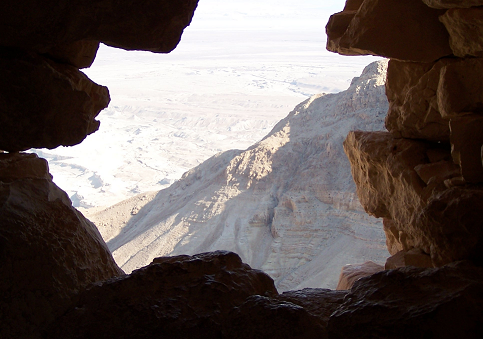Having recently studied the Qumran Targum of Job, I was especially interested in Randall Buth’s recent article on the relative lack of targums at Qumran. I would like to thank Buth for bringing this important topic to the website. Finding myself at odds with his conclusions, however, I feel a response is in order. I would like to suggest a different reading of the evidence of Qumran and its implications for the language of the larger Palestinian Jewish reading public. My own conclusions are very different from Buth’s, and I think that it is the question of a starting point that makes the difference.
Before drawing conclusions from the relative lack of targums at Qumran, one needs to appreciate the special circumstances represented by Qumran’s outlook on Hebrew and Aramaic. If the Qumran community was as averse to clothing its religiosity in Aramaic as recent scholarship has argued, then it would be wrong to draw a negative conclusion about the use of Aramaic beyond Qumran based on what we find (and do not find) at Qumran.[1] In other words, asking “Where is the Aramaic Bible at Qumran?” might be like asking “Where is the lunch meat in a vegetarian’s refrigerator?” The fact that a number of Aramaic texts were found at Qumran does not substantially alter this picture, except that we are then forced to say that the Qumranites did not look upon Aramaic as religiously evil per se, but only as an inadequacy for true piety and communion with God.
Given the pivotal role of targumic practice within the argument against a Hebrew vernacular, it is not surprising that the Qumran Targum of Job has become a storm center in the debate over the principal language(s) of Jewish Palestine. Scholars who believe that Hebrew was the vernacular language typically object to the use of this particular targum as evidence for the linguistic situation in Palestine. They emphasize that the targum of Job is just one targum, representing only one book of the Bible. “Where are all the other targums?” they ask. This tactic effectively turns the Targum of Job’s role in the argument for an early targumic corpus on its head: rather than try to explain the existence of this targum, scholars are now forced to explain the sparseness of the Qumran targumic library. Although this is an argument from silence, one cannot simply say that, for that reason, it fails to be probative: for a corpus of writings as large as that found at Qumran, a properly constructed argument from silence can indeed be probative to some extent.
Paid Content
Premium Members and Friends of JP must be logged in to access this content: Login
If you do not have a paid subscription, please consider registering as a Premium Member starting at $10/month (paid monthly) or only $5/month (paid annually): Register
One Time Purchase Rather Than Membership
Rather than purchasing a membership subscription, you may purchase access to this single page for $1.99 USD. To purchase access we strongly encourage users to first register for a free account with JP (Register), which will make the process of accessing your purchase much simpler. Once you have registered you may login and purchase access to this page at this link:
- [1] See Emile Puech, “Du Bilinguisme a Qumran?,” in Mosaique de Langues, Mosaique Culturelle: Le Bilinguisme dans le Proche-Orient Ancient: Actes de la Table-Ronde du 18 novembre 1995 organisee par l’URA 1062 “Etudes Semitiques” (ed. Francoise Briquel-Chatonnet; Antiquites Semitiques 1; Paris: Jean Maisonneuve, 1996), 171-189; Stanislav Segert, “Hebrew Essenes-Aramaic Christians,” in Mogilany 1995: Papers on the Dead Sea Scrolls Offered in Memory of Aleksy Klawek (ed. Zdzislaw J. Kapera; Krakow: Enigma, 1998), 169-184; William M. Schniedewind, “Qumran Hebrew as an Antilanguage,” JBL 118 (1999): 235-252; Steven Weitzman, “Why Did the Qumran Community Write in Hebrew?,” JAOS 119 (1999): 35-45; John C. Poirier, “4Q464: Not Eschatological,” RevQ 20/4 (2002): 583-587. ↩































































































